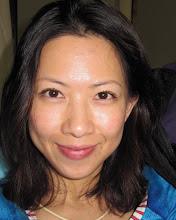Caviar is the processed salted roe of various kinds of fish. Roe is the fish’s fully ripe egg masses. Fish roes consist of a pair of ovaries, which are the membranes or sacs holding the eggs. The eggs are connected to each other and to the sac by connective tissues. When producing caviar, the fish eggs are separated from the connective tissue of the ovaries by being passed through a mesh screen. They are then salted and pasteurized. Traditionally, caviar is either eaten alone, served on toast with sour cream and chives, served on crackers with cream cheese, served on Blini (pancakes), or served with bake potatoes with sour cream. Some people prefer to eat caviar by itself in order to receive the full effect of its natural flavor. Others, finding the natural flavor overwhelming, will eat caviar with garnish and other foods, such as crackers, Blini, etc .
The three most valuable types of caviar are beluga, osertra, and sevruga.
The beluga, which is the largest of all sturgeons, can live more than a century and can be twice as long as a pickup truck. Beluga roe is the largest of the three types and is the rarest; it has a delicate skin, considerable texture, and a visible “eye” in the middle of each individual egg.
What is the threat?
With Russian caviar being such a popular luxury food item, what is it status today? Sadly, Russian caviar is in short supply due mainly to over fishing. During Communist rule, the sturgeon of the Caspian Sea was protected by the Soviet Union. In 1962, the Soviet Union imposed a ban on open-sea-fishing of the Caspian Sea. At that time, The Soviet Union controlled four-fifths of the Caspian Sea, with the last fifth controlled by Iran. However, after the collapse of the Soviet Union, five nations, instead of two, now surround the Caspian Sea. While Russia enforces a quota system, it cannot force its neighbors to do the same thing. The quota system itself is problematic. The quota is based in tons of fish caught not caviar, even though it is the caviar licensed fishermen are after. As a result, when fishermen catch male sturgeon, they refuse to count it towards their quota. By not counting the male sturgeon, fishermen enable themselves to catch even more females. As a result, the female sturgeons have become very rare.
In addition to over fishing, the black market trade of caviar smuggled from Russia and other neighboring nations is threatening the survival of the sturgeon. Poachers can make huge profits off a luxury food item in high demand. Other factors contributing to the demise of the sturgeon include environmental pollution and invasion of exotic species. While the sturgeon of the Caspian Sea is on the endangered species list, it might be too late.
What can chefs do to further the conservation cause? How can we contribute?
Our primary mission must be to be knowledgeable about today’s endangered species and to evaluate our current recipes to ensure that they are not contributing to the problem. Many conservation organizations are cooperating with the F&B industry in this regard. For example, the Marine Conservation Society is a UK charity for the protection of our seas, shores and wildlife. Together with Good Catch Group members, MCS is helping to create a sustainable award for fish and chip shops. They reward those making progress toward sustainable seafood sourcing and encourage others to do the same, so that the costumers can buy a battered bib or a coley fish cake at a chippie near them. MCS also collaborated with Hugh Fearnley-Whittingstall (famous British celebrity chef hosts the TV show “River Cottage”) to provide seafood sustainability ratings in his River Cottage Fish Book, and have presented to celebrity chefs and their employees about fish sustainability.
We can expect that more and more conservation information will be provided to the food and beverage industry. This information will include clear lists indicating species that are endangered and sustainable alternatives. Chefs should know these possibilities better than our diners and help them to make wise choices. According to Australian Marine Conservation Society’s Sustainable Seafood Campaigner, Pam Allen’s interview:
“Australian chefs and restaurants will be among the first to ride the wave of one of the hottest global food trends with the launch of a new chef’s sustainable seafood tool kit today.
The Good Fish Project will be Australia’s first sustainable seafood information resource designed specifically with chefs, restaurants and food businesses in mind.”
After all, chefs have to include the suppliers in their conservation actions. To partner with suppliers who are already working on conservation may be the easiest way. Some suppliers, like Whole Foods Market, have already screened the fish for us:
“Whole Foods Market found a way to commemorate Earth Day: it will no longer sell wild-caught fish with a “red-rating,” meaning a species is overfished, in its seafood departments, starting this Earth Day (April 22). This is one-year ahead of its original target of Earth Day 2013. A red rating is determined by non-profit organizations Blue Ocean Institute and Monterey Bay Aquarium, and in addition to meaning a species is overfished, it can also mean that the current fishing methods used harm other marine life or habitats. Whole Foods will be the “first national grocer to stop selling red-rated seafood,” according to a press release.
As of April 22, Whole Foods will stop selling Atlantic halibut, flounder, and skate, among others. This is important because all three species are overfished. Atlantic halibut is the largest species of flatfish found in the northwest Atlantic Ocean, according to the Northeast Fisheries Resource Center (NEFSC), and has been heavily overfished in the 19th and 20th centuries. Unfortunately, Atlantic halibut populations still have not recovered.”
Let’s expand the role of chef from promoter of great food to be a promoter of sustainable food choices. Many endangered species can be saved through our changes.
Reference:



